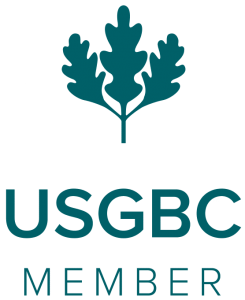There were a few bits of good news to be salvaged from the Statistical Institute of Jamaica’s (STATIN) report on the economy for the 2020 third quarter, which – as everyone knew would be the case – was overwhelmingly bad. According to STATIN, the final arbiter of economic statistics, output slumped 10.7 per cent, a smidgen north of the 11 per cent decline that was forecast by the Planning Institute of Jamaica (PIOJ). The central bank had been in the same range as the PIOJ in its projection of the COVID-19-induced slump. The trajectory is in line with the 10 per cent to 12 per cent decline expected for the entire calendar year and the fiscal year that ends March 31. The positive uptake, from this newspaper’s perspective, however, rests on more than the slowing of the carnage. For example, in the second quarter, the collapse was 18 per cent when compared to the same period in 2019. Or on the fact that increased economic activity in the third quarter, including a seven per cent uptick in construction, translated to growth of 8.3 per cent over the second quarter. That, of course, is welcomed. Our specific focus, though, is on the 2.5 per cent growth reported for agriculture and fisheries in the September quarter, given the historic correlation, as analyses in recent years have shown, between growth in agriculture and expansion in the economy as a whole. It is an opportunity for policymakers to put agriculture at the centre of a broader recovery and give it a transformational role in the Jamaican economy. INEFFICIENT ENTERPRISE Agriculture accounts for only seven per cent of Jamaica’s GDP, and no more than 11 to 12 per cent when its contribution to higher-up-chain production and output is taken into account. But the sector employs upwards of 200,000 people, or around a fifth of the labour force. The clear implication is that Jamaican agriculture is an inefficient enterprise despite an annual average increase of 1.6 per cent labour productivity in the five years up to 2018, which was driven largely by a 15.1 per cent improvement in 2016. The major reasons for the sector’s inefficiency are obvious. Farmers, with little capital, generally cultivate small plots, using archaic technology. Yet, the island’s pre-COVID-19 food-import bill passed US$1 billion, nearly equivalent to all visible exports and approximately 16 per cent of all imports. Many analysts say that up to a quarter of these imports could be substituted with domestic production. Crudely, this would amount to injecting more than J$30 billion annually into the island’s economy rather than spending it abroad. That, potentially, is a lot of capital for investment. The coronavirus pandemic that precipitated the slump in the economy emphasises why Jamaica ought to have a good, hard look at the structure of its economy, with a view to broadening its base and to making it more resistant to the shocks it has sustained in recent times. Tourism, the island’s largest earner of foreign exchange – more than US$3 billion – has been especially hard hit by the pandemic. In the face of the halt in global travel, the hotel and restaurants sector shrank by 65 per cent in the third quarter. Tourism, we have no doubt, will recover, but its vulnerabilities are clear. Happily, Jamaica largely avoided the food-availability crisis that confronts some countries, although given the more than 130,000 jobs lost because of the pandemic, there is an affordability issue for significant portions of the population. However, COVID-19 highlighted potential problems with international supply chains that raised questions about some elements of economic globalisation. Moreover, food security will be part of this debate. MOVE AHEAD OF THE CURVE Jamaica, in this regard, should rapidly seek to move ahead of the curve in the restructuring of its economy to meet the post-COVID-19 environment. Agriculture is one of the areas where there is a convergence of self-interest and opportunity. A large portion of the food imported into Jamaica is for consumption by tourists. In other words, Jamaica imports to feed its visitors, when, according to the experts, it could save more than 20 per cent of those costs by growing the food domestically. That would mean not only improving the net retention from tourism, but creating more jobs in the agriculture and related industries. Further, as we have pointed out previously, there are growing opportunities for the export of food. Singapore, for instance, is among the countries which does not have the land space to produce all its food and which, for strategic reasons, is seeking to widen its suppliers. Notably, agriculture is one of the areas in global trade where, up to now, countries have greater leeway for the creative use of protective measures to encourage domestic output although we appreciate that this approach is unlikely to be sustainable in the long run in a competitive trading arrangement. Making use of opportunities in agriculture will require facilitatory policies such as ending the practice of planting the best farmlands in real estate, such as the Government’s plan for a new city at Bernard Lodge on what the National Environmental and Planning Agency characterised as the island’s “most fertile … A1 soil”. New ideas also have to be brought to the sector – in training, production, marketing, and financing. This demands a new conversation on agriculture, among stakeholders, policymakers, and the academic institutions which, already, ought to be thinking through these things. Source: http://jamaica-gleaner.com/article/commentary/20210112/editorial-agricultures-place-new-economy



